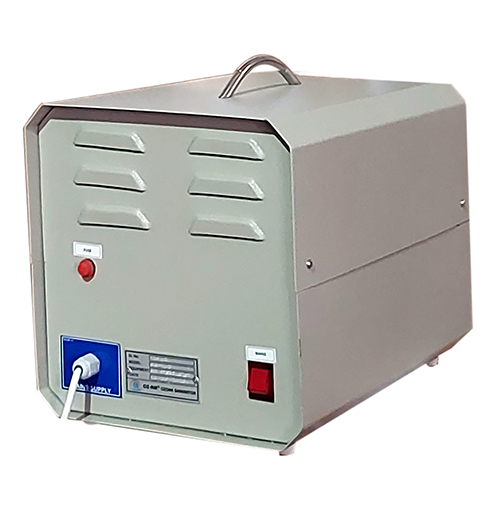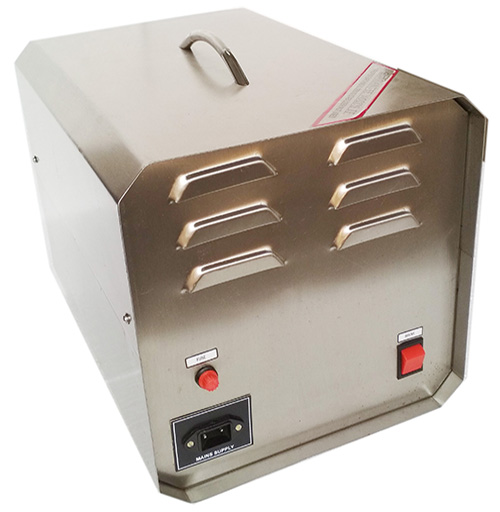
Clean and pathogen-free air remains one of the more dire needs in many industries. Creative OZ AIR's Ozone Air Sterilization Systems are a very powerful yet efficient and cost-effective answer to the process of sterilizing air within commercial and industrial settings. The method helps eliminate airborne pollutants in the form of harmful bacteria, viruses, mold, and odors, thereby helping ensure a healthy and safe environment for the employees and clients.
The Ozone Air Sanitization Systems apply ozone technology, where the cleansing of air takes place by the neutralization of airborne pathogens and contaminants. Being the natural disinfectant, ozone nitrates bacteria, viruses, mold, and other allergens to ensure that every business keeps its indoors clean and sterile.
These technologies eliminate the source odor, which is a significant issue in industries that are prone to this problem, including waste management, food processing, or manufacturing. The ozone gas not only sterilizes but breaks down the odor-causing molecules, and the air is left smelling fresh and clean.
The Ozone Air Sterilization Systems will be extremely energy efficient, therefore economical to run for long periods of time. Avoiding the use of aggressive chemical cleaners and hand-based disinfection processes by the company will help reduce operational costs without a compromised air quality standard.
Ozone Air Sterilization Systems ensure that the regulatory requirements of a majority of the industries to control airborne pathogens and pollutants strictly are met. Hence, businesses can perform their activities accordingly to maintain the regulatory compliance of industry health and safety standards.
Hospitals and clinics have to be very sterile in their facilities if cases of cross-infection from one patient to another are to be prevented. Ozone Air Sterilization Systems ensure that airborne pathogens are always being neutralized. It makes it much safer for patients as well as health providers.
Such industries as waste and wastewater treatment face the problem of the management of strong smells and airborne impurities. With Ozone Air Sterilization Systems' capacity to remove malodors and purify the air, such facilities tend to come closer to being fully in tune with what the requirements of environmental legislation require while achieving better working conditions.
Any airborne dust, chemical fumes, or other pollutants in manufacturing plants and warehouses can affect not only the health of workers but also the equipment used. Ozone Air Sterilization Systems decontaminate the air to reduce the possibility of health risks and keep the equipment free of contamination.
Creative OZ AIR provides leading-edge, power-efficient ozone air sterilization for companies seeking to improve air quality while providing a sterile environment. In health care, food processing, and manufacturing plants, such systems ensure sterilized air at all times for the workplace, thus ensuring the minimum deviation from safety standards and healthier work environments. For industries with clean air in mind, Ozone Air Sterilization Systems are investment gold.


Ozone air sterilization systems generate ozone gas, typically through corona discharge or ultraviolet light. The ozone is then released into the air where it reacts with contaminants, breaking down their molecular structures and rendering them harmless.
Ozone air sterilization systems can effectively eliminate airborne pathogens, allergens, and odors, improving indoor air quality. They are often used in settings where cleanliness and sanitation are crucial, such as hospitals, food processing facilities, and laboratories.
While ozone is an effective disinfectant, high concentrations of ozone can be harmful to humans and animals. It's essential to use ozone air sterilization systems with caution and follow safety guidelines to prevent overexposure and potential health risks.
Safety precautions include ensuring proper ventilation, limiting human and animal exposure during operation, and following manufacturer guidelines for installation and maintenance. Some systems are equipped with sensors and controls to monitor ozone levels and adjust output accordingly.
While ozone air sterilization systems are effective against many airborne pathogens and allergens, they may not eliminate all contaminants. Some systems incorporate additional air purification technologies such as filters and UV-C light to enhance their effectiveness.
Ozone air sterilization systems can be used in residential settings, but it's essential for homeowners to understand the potential risks and benefits. Proper installation, operation, and maintenance are crucial to ensure safety and effectiveness.
The time required for ozone to sterilize the air depends on factors such as the size of the space, the concentration of ozone generated, and the level of contamination. In general, ozone air sterilization can take anywhere from a few minutes to several hours to achieve desired results.
Regulations and guidelines for ozone air sterilization systems vary by region and jurisdiction. It's essential to research local regulations and consult with experts or professionals in indoor air quality to ensure compliance and safety.
Yes, ozone air sterilization systems can be used in conjunction with other air purification methods such as HEPA filters, activated carbon filters, and UV-C light to achieve comprehensive air purification and sanitation. However, it's essential to ensure compatibility and proper integration of these technologies.